Click below to watch the video:
Do the ancient measurements of the Ka’ba match Mecca or Petra? Details of the inscription in Saudi Arabia dating the building of Masjid al-Haraam
Transcript
#4 This is a general transcript of a Dan Gibson video in the series: Archeology and Islam.
Hello, and welcome to another video in the series Archeology and Islam. My name is Dan Gibson… This is the second video about the Ka’ba. If you haven’t seen the first video, please stop now and go back to the first video. In the first video I introduced a number of terms and concepts. In this video, I want to examine now the first original Ka’ba in Petra and compare it to the Ka’ba in Mecca.
Recently I posted an academic paper on the Internet called: Four Ka’bas. You can read that paper at the sites listed on the screen. And there you will have all of the footnotes and references.
The first Ka’ba was built by Abraham in a valley that had two names in Islamic literature. First, it is called Becca, the place where Abraham left Hagar, and where she wept.
The Qur’an tell us: “Behold, the first Sanctuary appointed for mankind was that at Becca, a blessed place, and a guidance to the people.” (Qur’ān 3:96)
The name for this place is also Hijr. And we read about this in Ṭabarī’s account.
Ṭabarī Vol 2.73: “Abraham directed Hagar and Ishmael to go to al-Ḥijr, and he settled them there.
In the film The Sacred City, I demonstrated that this all refers to the Petra valley in southern Jordan.
All Qiblas from the first century of Islam all pointed to this valley, and all of the descriptions of this place, from the Qur’an, and the Hadiths and the histories all fit the Petra valley.
Now the Ka’ba was rebuilt when Muhammad was a young man. From the alignment of the Qiblas, we know that this also took place in Petra. Mecca was not even a city at this point. There is no archeological data for the city of Mecca, everything took place in Petra.
Now, Ibn Hisham puts it this way: …the Quraysh decided to rebuild the Ka’ba when the apostle was thirty-five years of age. They were planning to roof it and feared to demolish it, for it was made of loose stones above a man’s height, and they wanted to raise it and roof it because men had stolen part of the treasure of the Ka`ba which used to be in a well in the middle of it. (Ibn Hisham 44) So, let’s first, let’s consider the size of the Ka’ba.
So, in a book, that is written here, it is called Akbar Maka, or News about Mecca, it was written by al-Azraqī. He is an early writer of Islamic history. And Azraqī describes the early Ka’ba and gives us measurements of the Ka’ba that was rebuilt during the time of Muhammad, during his lifetime.
On Page 27 Azraqī tells us that it was made of rough stone laid dry. And the dimensions of the sides are listed as: north-east: 32 cubits, north-west: 22 cubits, south-west: 31 cubits, south-east: 20 cubits. So the proportions were roughly 3:2. We can calculate a cubit as 0.4572 meters, if we do that, then the dimensions would have been: 14.63 meters x 10.6 meters x 14 meters and by 9 meters and so forth.
Now here is the present day Ka’ba in Mecca. Notice that the early Ka’ba was a different size than what Azraqī describes to us.
Let’s compare the Azraqī’s measurements: The top right is 14.63 meters. But that doesn’t fit. The Ka’ba in Saudi is too small.
What about the bottom right. Azraqī says that side of the Ka’ba is 9.1 meters. Again the Saudi Ka’ba is too small.
Well, the other side should be 14.17 meters, but again whatever Azraqī is describing is bigger than the Ka’ba in Mecca.
Well, what about the top side? Azraqi said that it should be 10.6 meters. Again the Qa’ba in Mecca is smaller. So notice that the Ka’ba in Mecca is a totally different size. None of the measurements fit. You would think that if the Ka’ba in Mecca was built on the same foundation as the earlier Ka’ba, it would be about the same size as the earlier one. But it is not.
Now, what about the Ka’ba in Petra? Let’s check the measurements against that Ka’ba.
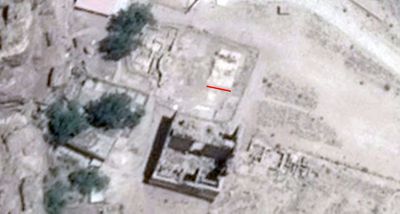
The bottom right should be 10.6 meters. Again a good fit.
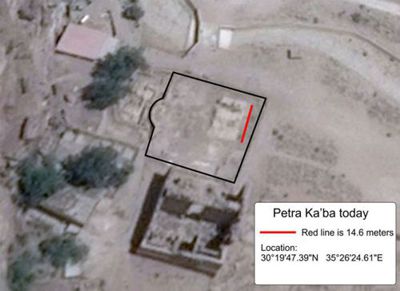
Top Right. 14.63 meters. A good fit.
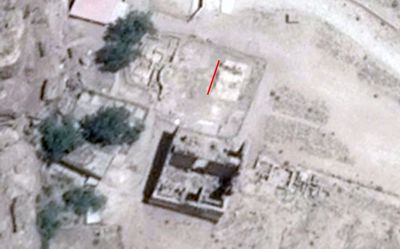
Azraqi tells us that the Ka’ba on the bottom left side was 14.17 meters. Again, a good fit.
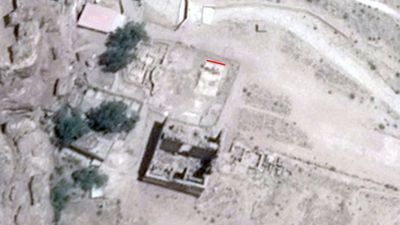
And again the final side should be 9.1 meters. And again it fits!
Notice that Azraqi is not describing a cube. The Ka’ba he describes is wider at the bottom and longer on the left. And what do we see in Petra? The exact, correct size and shape.
So check out this book, Akbar Mecca, and notice he is not describing a cube. He is describing something that is wider on the bottom, and longer down one side than the other side.
And what do we see in Petra; this exact same size and shape. So Azraqī is clearly describing the Ka’ba in Petra, Long ago in his book, and he says this is the one that was rebuilt during the lifetime of the prophet Muhammad. So here was have an early record of the Ka’ba and it is a very strong indicator that the Ka’ba was here, in Petra, known as Becca, and also named al-Hijr and we will get to the names of Petra in a later video. Now another early writes notes that the houses and buildings of the city came so close to the Ka’ba, that later when they wanted to enlarge it, houses had to be demolished. This fits the Petra Ka’ba as the houses were pressed in close around it. Now, also notice that the Ka’ba stands in one side of the walled area, in Petra, not in the middle as it does in Mecca. This is significant and is noted by Azraqī on page 267.
If the Ka’ba in Petra is the true original Ka’ba, then, when was the Black Rock and the Ka’ba moved down to Mecca in Saudi Arabia? In my book Early Islamic Qiblas, I come to the conclusion that the rock was moved in 65 AH after the Hijra, by Ibn Zubayr. He took the rock to Mecca for safe keeping, and he built a new Ka’ba there. In the new replacement Ka’ba he combined the hijr wall, known as Hatim, and he attached it to the Ka’ba building.
Al-Ṭabarī Vol 20:176 (referring to year 65 AH) he tells us that ‘Abdallah ibin al-Zubayr rebuilt (Notice what he says) al-Bayt al-Ḥarām incorporating the Ḥijr within it.
Where do we find that? In Saudi Arabia.
What does he call it? Bayt al Haram not Masjid al Ḥarām.
Sp when was the Masjid built around it? I believe that happened a few years later.
In the region of Ḥuma al-Numūr, north west of Mecca in Saudi Arabia, over 60 early Islamic inscriptions have been found. These include verses of the Qur’ān, supplications asking for forgiveness, mercy, martyrdom and paradise; trust and belief in the Prophet Muḥammad and the sending of prayers and blessings upon him.
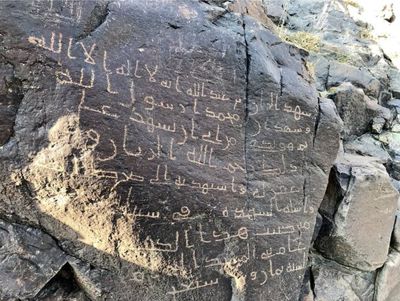
Ḥuma al-Numūr Inscription
Now, one inscription stands out as it contains the full shahādah and also mentions the building of Masjid al-Ḥarām that year. And the inscription is clearly dated as 78 AH which would be in western dating 697 AD. This inscription clearly uses the word “banā or built. It also claims that it was the year 78, when Masjid al-Ḥarām was constructed… in Mecca There can be no doubt which location it is speaking of, because Mecca is only a few miles away where Petra is over a thousand miles away.
Conclusion
I realize that this material is very hard for my Muslims to accept. They have been taught for centuries that the only Ka’ba ever built, existed in Mecca in Saudi Arabia. But now using modern tools we can see that the original Ka’ba was in Petra. Indeed the foundation of a structure remains there that looks very much like an early Ka’ba, and the dimensions and descriptions of the Ka’ba in Petra all fit that Ka’ba. If this is true then the Petra Ka’ba was the only Ka’ba during the lifetime of the prophet and the first four rightly guided caliphs. They would have all prayed toward Petra. On the other hand, the Ka’ba in Saudi Arabia appears to be smaller. It is oriented slightly different from the Petra Ka’ba, and the ḥatim wall has been moved closer and attached just like Al-Ṭabarī tells us about Ibn Zubayr’s Ka’ba.
So it seems that the Ka’ba in Petra is the original Ka’ba, and the one in Mecca was made by Ibn Zubayr when he rebelled against the caliphs.
Now, along with this, as we mentioned, there is this inscription in Saudi Arabia stating that Masjid al-Ḥarām was built in 78 AH. So it appears that the first original Ka’ba was built in Petra, and the final Ka’ba, built by the rebels, is in Saudi Arabia.
Now, this creates a theological issue. From the dating of mosques and all the different mosque construction, we can see that the prophet Muḥammad, and the first four rightly guided caliphs all prayed towards Petra. It would seem that those who want to follow the commands of their prophet, and who want to follow their book should pray to the original Masjid al-Ḥarām which is in Petra.
The later evolution of Masjid al-Ḥarām in Mecca that happened many years after the prophet had died.
So, how does this affect the merit gained by those praying towards a later Qibla? Does it count? Will their prayers be accepted by God? It is a theological question.
What about foods killed facing a later Qibla? Is it still Halāl or is it not Halāl?
And what about pilgrimages that is made to Masjid al-Ḥarām in Mecca, the later Qibla? Do they count for anything? Those pilgrimages?
The question of the correct Qibla is not just an interesting sideline, it is part of the very core of Islam.
I am concerned for my Muslim friends. What does this mean for them? I think the archeology and histories are very clear. What needs to be considered now are theological questions. What does all of this mean?
In my next video I will compare the names of Mecca with the names of Petra, and try to answer the question that views have sent to me: Why is Petra not mentioned in the Qur’an? Or is it?
We will find out in the next video
So if you want more information please visit the website on the screen.
I am Dan Gibson, and this has been another video in the series of: Archeology and Islam.
Bibliography
Al-Azraqi, Akhbar Makka: History of Makka, (2003). (Arabic) Balādhurī, Futūḥ al-Buldān, Vol 1. p. 73-4 (Arabic)
Gibson, Dan, Early Islamic Qiblas, Independent Scholars Press, 2017
In Hisham, (2010) English Translation, https://asimiqbal2nd.files.wordpress.com/2010/09/seerah-ibnhisham.pdf)
Al- Ṭabarī , Ḥajjāj b. Yūsuf , The History of Al-Tabari, various volumes and translators, State University of New York Press,
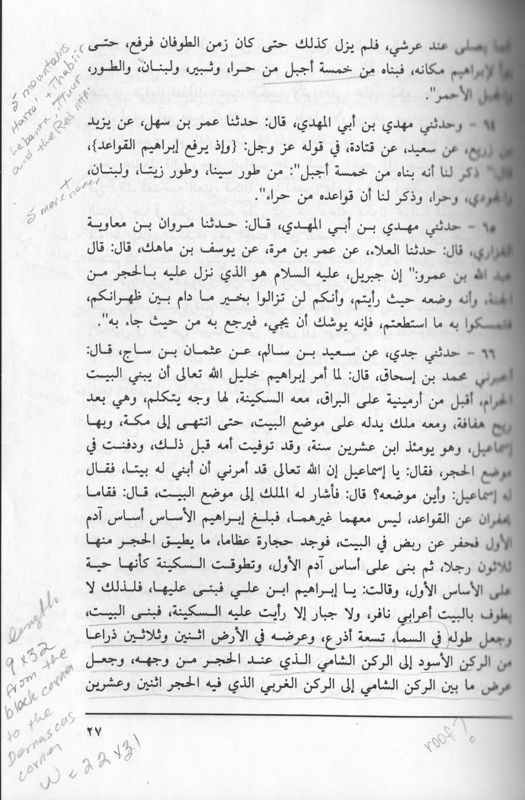
Page 27 Azraqi - Akbar Mecca
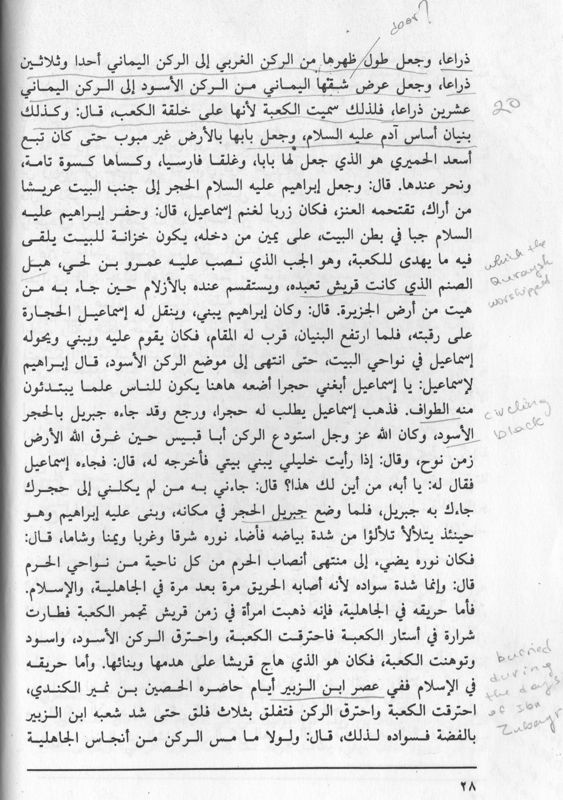
Page 28 Azraqi - Akbar Mecca
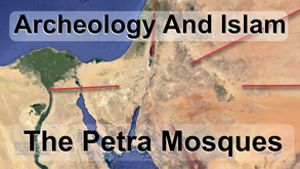
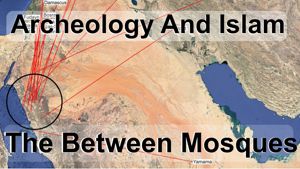
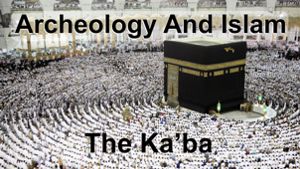
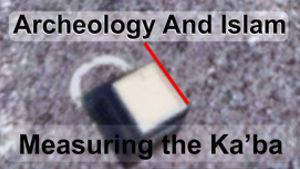
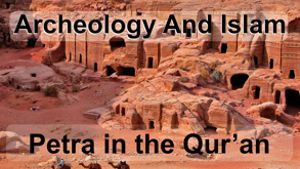
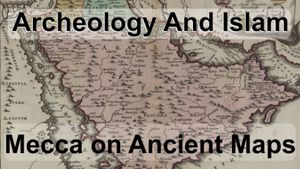
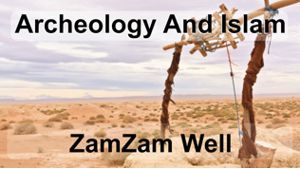
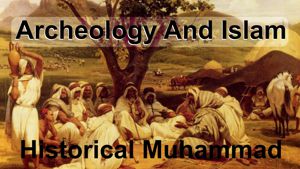
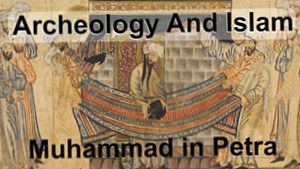
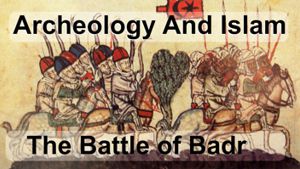
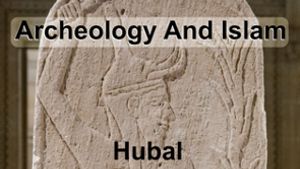
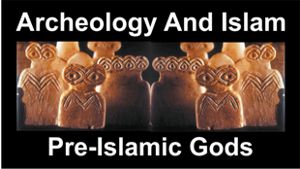
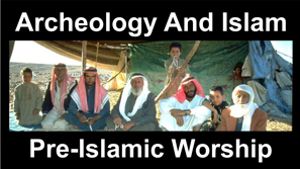
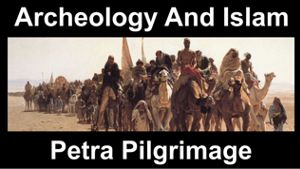


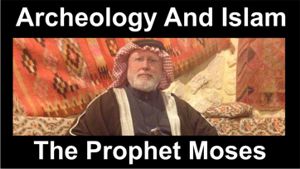

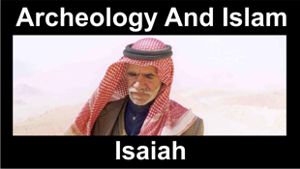
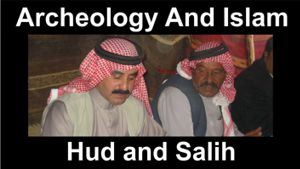


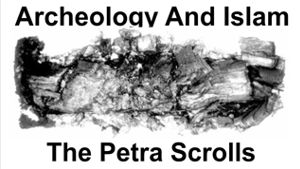
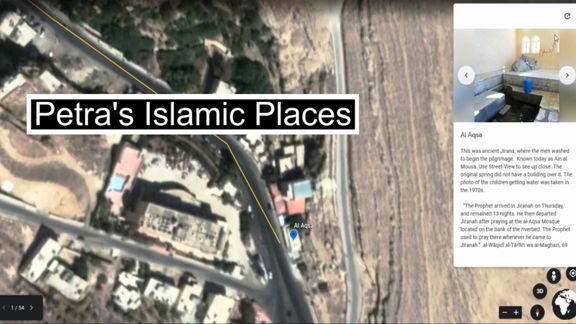

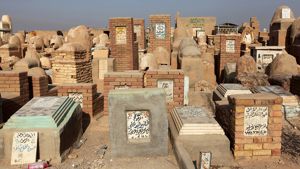
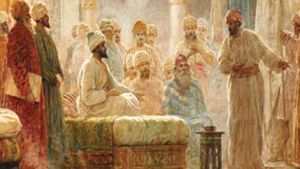
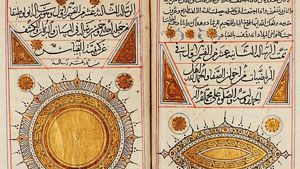
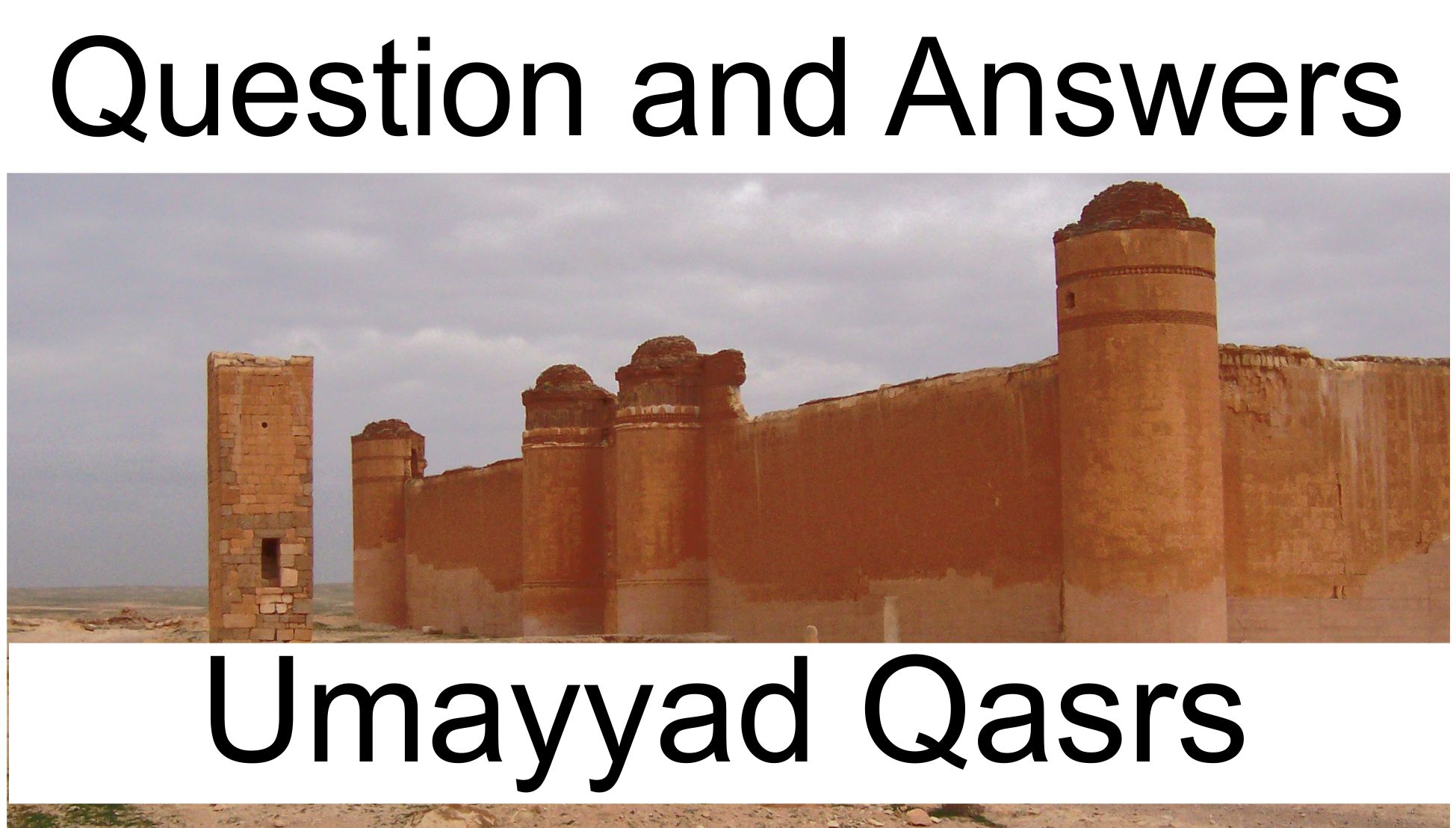
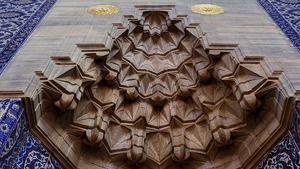
Page Discussion
Membership is required to comment. Membership is free of charge and available to everyone over the age of 16. Just click SignUp, or make a comment below. You will need a user name and a password. The system will automatically send a code to your email address. It should arrive in a few minutes. Enter the code, and you are finished.
Members who post adverts or use inappropriate language or make disrespectful comments will have their membership removed and be barred from the site. By becoming a member you agree to our Terms of Use and our Privacy, Cookies & Ad Policies. Remember that we will never, under any circumstances, sell or give your email address or private information to anyone unless required by law. Please keep your comments on topic. Thanks!